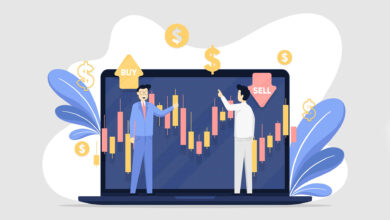What is blockchain?

Everything about blockchain technology in simple language
Blockchain is a revolutionary technology that has taken the world by storm in recent years. At its core, a blockchain is a decentralized and distributed digital ledger that records transactions across a network of computers. This means that the data in a blockchain is stored across a vast network of computers, making it difficult to tamper with or manipulate.
The concept of a blockchain was first introduced in 2008 by an anonymous person or group of people using the pseudonym Satoshi Nakamoto. The first and most well-known implementation of blockchain technology is Bitcoin, a decentralized digital currency that has gained significant popularity and acceptance in recent years.
The fundamental idea behind blockchain technology is to create a secure and transparent system where information can be shared and transactions can be conducted without the need for intermediaries such as banks or other financial institutions. This is achieved through the use of cryptographic algorithms that ensure the integrity and security of the data stored in the blockchain.
The potential applications of blockchain technology are vast and varied, ranging from financial services and supply chain management to healthcare and government services. The decentralized and transparent nature of the technology makes it an ideal solution for industries that require secure and reliable data storage and transfer.
In this article at Forvest, we will explore the basic concepts of blockchain technology in simple language, including how it works, its advantages and limitations, and its potential impact on various industries.
How does blockchain work?
Blockchain technology relies on a decentralized, distributed network of computers, also known as nodes, to maintain a secure and transparent ledger of transactions. When a new transaction is made, it is broadcasted to the network of nodes. Each node verifies the transaction by solving a complex mathematical equation, also known as a cryptographic puzzle. Once the transaction is verified by the majority of nodes on the network, it is added to a block of transactions.
The block is then added to the existing chain of blocks, creating a permanent and unalterable record of all transactions. This process is known as “mining,” and the individuals who solve the cryptographic puzzles are known as “miners.” As a reward for their efforts, miners are typically paid in cryptocurrency.
To maintain the integrity of the blockchain, each block contains a unique cryptographic hash, a string of letters and numbers that represents the block’s contents. If the contents of the block are altered in any way, the hash will also change, alerting the network that the block has been tampered with.
The decentralized nature of blockchain technology makes it difficult for any single entity to control or manipulate the ledger. Additionally, the transparency of the ledger means that all transactions are visible to anyone on the network, creating a high level of trust and accountability.
The history of blockchain technology
Blockchain technology has a relatively short but intriguing history. The first blockchain was introduced in 2008 as a part of the Bitcoin cryptocurrency by an unknown person or group using the pseudonym Satoshi Nakamoto. Blockchain was initially developed as a decentralized ledger that could securely record and track transactions without the need for intermediaries like banks or government institutions. This innovation was revolutionary as it allowed for secure and transparent peer-to-peer transactions that were not controlled by any central authority.
The use of blockchain technology was not limited to the cryptocurrency domain, and it quickly caught the attention of various industries. In 2015, Ethereum was introduced as a blockchain platform that could support the creation of decentralized applications beyond just cryptocurrencies. This led to the development of smart contracts that could automate and facilitate the execution of contracts and transactions without the need for intermediaries.
Today, blockchain technology has evolved into a multi-faceted industry, with its application extending to various sectors beyond just finance, including healthcare, supply chain management, and real estate. The technology has even been used in developing countries to improve land ownership and voting systems. The potential of blockchain technology is vast, and its impact is expected to continue growing as more businesses and institutions adopt it.
Key features of blockchain
Blockchain technology is characterized by several key features that make it unique and valuable. These features include:
- Decentralization: Blockchain is a decentralized technology, which means it is not controlled by a single entity or organization. Instead, it is maintained and updated by a network of users, making it more secure and resistant to censorship.
- Immutable ledger: Once data is recorded on a blockchain, it cannot be altered or deleted. This makes the ledger tamper-proof and ensures the integrity of the data stored on it.
- Transparency: The blockchain is transparent, allowing all users to view all transactions on the network. This enhances trust and accountability.
- Security: Blockchain uses advanced cryptographic techniques to secure data and prevent unauthorized access. This makes it highly secure and resistant to hacking.
- Smart contracts: Smart contracts are self-executing contracts with the terms of the agreement written directly into code. They automate the execution of transactions, making them more efficient and reducing the need for intermediaries.
These key features of blockchain technology enable it to revolutionize a wide range of industries, from finance to healthcare to supply chain management. As the technology continues to evolve and improve, it is likely to have an even greater impact on our lives in the future.
Blockchain applications and use cases
Blockchain technology has a wide range of potential applications and use cases across various industries. Some of the most notable use cases of blockchain include:
- Cryptocurrencies: The most well-known application of blockchain technology is the creation of cryptocurrencies such as Bitcoin. Blockchain enables the creation of a decentralized and secure system for recording transactions without the need for a centralized intermediary.
- Supply Chain Management: Blockchain technology can be used to create a transparent and secure system for tracking goods and products as they move through the supply chain. This can help improve efficiency, reduce fraud, and enhance transparency.
- Digital Identity Management: Blockchain can be used to create a secure and tamper-proof system for managing digital identities. This can help prevent identity theft and fraud, and enable users to control and manage their personal data more effectively.
- Smart Contracts: Blockchain technology can be used to create self-executing contracts that can automate various business processes. These contracts can be used to automate payments, enforce agreements, and streamline various business operations.
- Voting Systems: Blockchain technology can be used to create secure and transparent voting systems that can prevent fraud and ensure the integrity of the voting process.

Overall, the potential applications of blockchain technology are vast and varied, and are likely to continue to expand as the technology matures and evolves.
Benefits and challenges of blockchain
Blockchain technology offers numerous benefits, including increased transparency, security, and efficiency. By providing a decentralized and immutable ledger, blockchain enables parties to transact directly with each other without the need for intermediaries. This results in faster transaction processing times, lower costs, and greater security.
One of the key benefits of blockchain is increased transparency. Blockchain technology makes it possible to track and verify transactions in real-time, providing a level of transparency that was previously not possible. This increased transparency can help to reduce fraud and corruption and improve overall accountability.
Another advantage of blockchain is its security features. The decentralized and distributed nature of blockchain makes it difficult for attackers to hack or manipulate the system. Additionally, the use of cryptography and smart contracts further enhances security and reduces the risk of fraudulent activity.
However, blockchain technology also presents some challenges. One major concern is scalability, as blockchain networks can become congested and slow down as the number of transactions increases. Another challenge is the issue of regulation, as the legal status of blockchain technology varies across different jurisdictions.
Overall, while blockchain technology offers numerous benefits, it is important to carefully consider the potential challenges and limitations before implementing it in a given context.
Blockchain vs. traditional databases
Blockchain and traditional databases are two different technologies with their own unique features and advantages. Traditional databases are centralized systems that store data in a hierarchical structure, controlled by a single entity or organization. On the other hand, blockchain is a decentralized, distributed ledger technology that allows multiple participants to access and share data in a secure and transparent way without the need for intermediaries.
One of the main differences between the two is their approach to data security. Traditional databases rely on centralized control, which means that if the central authority is compromised, the entire system can be compromised.
Blockchain, however, is built on a distributed system, where each participant has a copy of the ledger. This makes it virtually impossible for any one party to alter the data without consensus from the network
Another key difference is the level of transparency provided by the two systems. Traditional databases are often closed systems, where only authorized parties have access to the data. In contrast, blockchain provides a high level of transparency, allowing all participants to view the data and its history in real-time. This transparency makes blockchain particularly useful in industries where trust and transparency are essential, such as supply chain management and financial transactions.
Future of blockchain technology
The future of blockchain technology is promising and has the potential to revolutionize various industries. One area where blockchain is expected to have a significant impact is finance. Blockchain technology can improve the efficiency, transparency, and security of financial transactions. The use of smart contracts, decentralized finance, and digital currencies are some of the areas where blockchain is expected to bring significant changes to the financial industry.
Apart from finance, blockchain technology has the potential to transform supply chain management, healthcare, real estate, and many other sectors. The use of blockchain in cryptocurrency chain management can improve transparency, reduce fraud, and increase efficiency. In healthcare, blockchain can enable secure sharing of patient data and ensure the privacy of sensitive information. In real estate, blockchain can streamline property transactions and reduce the need for intermediaries.
Despite the potential benefits, there are also some challenges associated with the adoption of blockchain technology. These include regulatory uncertainty, scalability issues, and the need for standardization. However, as the technology evolves and matures, it is expected that these challenges will be addressed.
In conclusion, the future of blockchain technology is bright, and its impact is expected to be significant in various industries. The potential benefits of blockchain are vast, and it is up to businesses and organizations to explore and utilize the technology to drive innovation and growth.
Conclusion
In conclusion, blockchain technology has the potential to revolutionize various industries by providing enhanced security, transparency, and efficiency. As the technology continues to evolve, businesses and organizations are exploring new and innovative ways to leverage blockchain for their operations. Forvest, a leading AI-based analytics firm, is at the forefront of the blockchain revolution, providing cutting-edge tools and solutions for investors and traders to evaluate the cryptocurrency market.
For more insights and information about the blockchain technology, be sure to follow Forvest’s blog. With regular updates and analysis, the blog provides a valuable resource for those interested in staying up-to-date with the latest developments in the blockchain industry. As blockchain adoption continues to grow, Forvest is committed to providing its customers with the necessary tools and information to make informed decisions and achieve their investment goals.
Rating of this post
Rate
If you enjoyed this article, please rate it.



